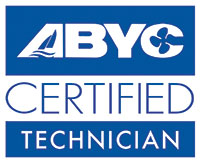Annapolis Boat Air Conditioning Repair
Found 62 results
BOAT AIR CONDITIONING REPAIR IN ANNAPOLIS
HOW TO FIND BOAT AIR CONDITIONING REPAIR IN ANNAPOLIS
The Annapolis area has several marine air conditioning repair shops, but you may be facing long wait times since there are not enough shops to meet demand in season. You can find more marine AC repair shops closer to Baltimore or Washington, DC, but you shouldn’t have to look that far. Just across the Bay Bridge on Kent Island there are plenty of marinas and service providers. Kent Island is a popular place for Marylanders or people from DC to keep their boats. Also, you can go further south on Maryland’s western shore to Deale. Herring Bay has a high concentration of marinas since it is only a 25min drive from the outskirts of Washington DC.
In the Chesapeake Bay area, it’s usually a good call to consult your marina. Most of the marine AC technicians are located in marinas and often rent space from them. Marinas like Bay Bridge Marina, Herrington Harbour, and Jabin’s Yachtyard are the largest and have the most diverse service provider offerings. If you’re cost conscious, it’s worth researching online to find marine air conditioning repair outside of your marina. If you are outside Annapolis, you can search on Mariner Exchange for marine air conditioning repair in your area. You should get dozens of results with service providers that are rated and reviewed. Make sure you look at the distance these companies are from you since there may be costs associated with travel. It is also worth looking at the dealer locator on the AC unit manufacturer’s website. Dealers typically have the ability to service the units as well.
COST
AC repair for your boat can cost a lot depending on where you are. Since boating is seasonal in Annapolis, there aren’t that many repair shops, which creates a rush during the season. The service backlog can have you waiting ages for someone to look at your unit. This demand also increases the cost. Average marine AC repair can cost $200 to $500 in Annapolis. As mentioned previously, be weary of travel costs since these can add unwelcome surprises to your bill.
MARINE AIR CONDITIONER BASICS
There are three major components to a marine AC unit:
-
Evaporator - this uses boiling refrigerant to absorb heat from the surrounding air.
-
Compressor - creates the pressure to circulate the refrigerant through the system.
-
Condenser - cools and liquefies the refrigerant before it is pumped back to the evaporator.
Chances are that your air-conditioning is a direct expansion system, which means it pumps refrigerant directly to air handlers in the boat’s cabin. Another type of system is a chilled-water system, which cools fresh water and circulates it through the air handlers. The maintenance for both of these types of systems is pretty much the same. It is always worth keeping the manual for your unit on the boat to troubleshoot issues, but fortunately these days many units have digital panels that display error codes.
To fully understand the anatomy of your unit, you should start at the expansion valve which is located upstream of the evaporator. This valve regulates the flow of high-pressure refrigerant into the evaporator. At this point, the refrigerant is liquid because it’s under a lot of pressure, but when it passes through the expansion valve, the refrigerant starts to boil as the pressure drops. The boiling point of refrigerant R410A - the most common - is around minus 55 degrees F. As the refrigerant boils, it absorbs heat in the surrounding air and thus gives the cooling effect.
HOW TO FIND THE RIGHT MARINE AIR CONDITIONER
You need to consider the unit’s capacity, its energy consumption, and the noise it makes before purchasing. As you search for the right unit for your boat, keep the following in mind:
-
The unit has to have enough capacity: The cooling capacity of the unit has to be able to handle the size of the cabin in which you’re installing it.You will need to measure your cabin and check how many BTUs of cooling power your unit puts out.
-
Make sure it’s a modern AC unit: Make sure the unit uses refrigerant R-410A and that it uses the latest tech to prevent excessive vibration. Look for things like rust-free drain pans, hermetically sealed units, and vibration isolation mounts.
-
Make sure your battery can accommodate your unit: Make sure your battery and electrical system can handle your unit. Most units need between 115 volts at 60 Hz and 230 volts at 50 Hz.
-
Make sure there’s enough space: Find an AC unit that uses space efficiently. Every inch counts in your boat’s cabin. You want to strike a balance between size and cooling capacity that is appropriate for your cabin.


